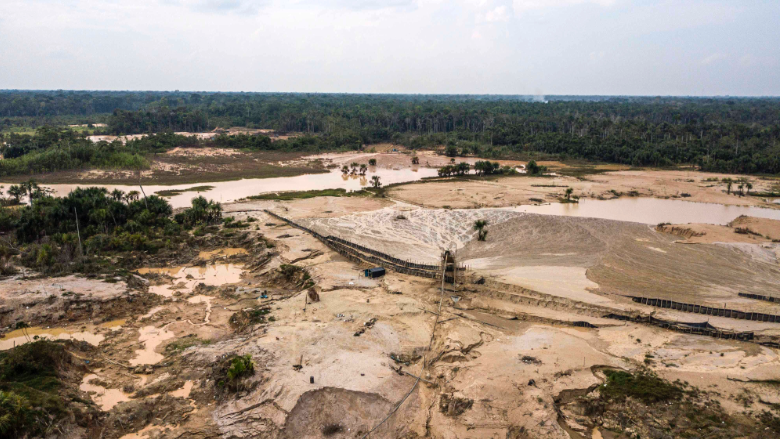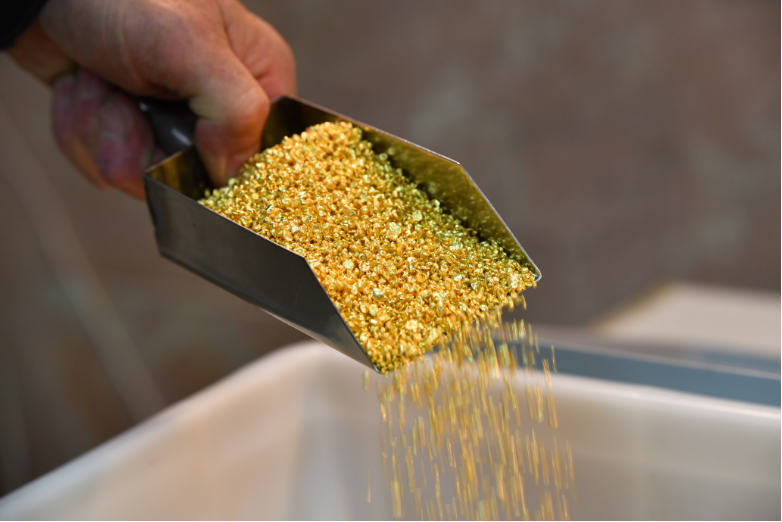Luxury comes at a price, both for the environment and the climate. The ever-growing luxury industry has a huge impact on the natural environment and resources, coupled with high levels of consumption by the wealthy. A 2023 report by Oxfam estimates that the richest 1% of humanity—77 million people—generate more carbon emissions, 16% of the total, than the poorest 66%. Items typically associated with luxury, such as diamonds, have a significant environmental and climate footprint, inspiring the need for greener alternatives. But what about mankind’s favourite precious metal, gold—is all that glitters sustainable?

Man’s relationship with gold is so ancient that some sources even suggest that it was the first metal used by humans, as it is found in nature in its pure state and is accessible in alluvial deposits without the need for mining. There is talk of gold nuggets found in Spanish Palaeolithic caves 40,000 years ago, and of the appearance of the first ornaments in the Neolithic period, which became widespread in the most ancient civilisations, such as the Egyptians. It is the first metal mentioned in the Bible, where it appears more than 400 times. It was mined as early as 2500 BC and the earliest known map in history shows a gold mine in Egypt around 1300 BC.
The high price of gold
It’s not just because of its rarity that people have killed and died for gold; other metals are also scarce, but considered less desirable. The aesthetics of gold have undoubtedly played a part, contrasting with its lack of utility; it’s an excellent conductor of electricity, but little else. And it’s chemically uninteresting, being relatively inert, which gives it the property of remaining unchanged over time. There are other precious metals, defined as those that have an international currency code assigned to them as monetary values; and some, such as platinum, often reach a higher price than gold. But above all others, gold is undoubtedly the king of precious metals.

A king for which we pay a high price. Some 3,100 tonnes of gold are mined each year, with China being the world’s largest producer at 11%, followed by Russia and Australia at 10% each. Only 7% of this total is used for industrial, technological or medical purposes, with the lion’s share (93%) going into jewellery and bullion. The vast majority of production is by large companies, but 20% of jewellery gold is produced by small-scale artisanal mining. Illegal mining is a widespread problem, and its consequences are extremely serious: in the so-called Guiana Shield, a region of the Amazon rainforest that stretches through the Guianas, northern Brazil and eastern Venezuela and Colombia, gold mining is responsible for 90% of all deforestation. The destruction is also visible in Peru, including on satellite images, and in several African countries.

Gold mining is also responsible for more greenhouse gas emissions, which cause climate change, than the annual emissions from all passenger flights between European nations combined. Another highly damaging effect comes from the mercury dumped during the extraction process. It is the world’s largest source of mercury pollution, accounting for more than 1,000 tonnes per year and 38% of the total. In addition to the damage to health and wildlife, deforested land that has been contaminated with mercury has very limited prospects for recovery, drastically reducing its ability to recapture the carbon released. The UN’s Minamata Convention on Mercury calls for a reduction in the use of mercury, and a country like Australia has managed to reduce its mercury use to almost zero. For its part, the industry claims that gold mining is one of the least harmful forms of mining. But for the University of Oxford business and environment expert Stephen Lezak, it is “one of the most environmentally and socially destructive processes on the planet”.

Circular use and the social problem
According to Lezak and his colleagues, it would be possible to move away from mining and rely entirely on recycled gold, which already meets a quarter of demand. This circular use dispenses with mercury, has a water and carbon footprint less than 1% of that of mined gold, and would meet not only industrial and medical needs but also 45% of jewellery demand, while investment stockpiles would have to be limited to existing reserves. And while experts acknowledge that this would raise prices, they suggest that the jewellery market could shift to less pure but more sustainable alloys, especially for an increasingly environmentally conscious consumer.

Experts are also well aware of the social problem: more than 10 million workers and their families depend on artisanal mining today, mostly in poor countries. The idea that their governments should offer them opportunities to relocate may sound utopian, perhaps as utopian as the belief that it is possible to do without mining and its lucrative investments. But the demand for sustainability is driving change, and jewellery brands have pledged to switch to 100% recycled gold. Above all, as always when it comes to the environment and climate, sustainability is no longer an option, but a necessity if we are to survive on a habitable planet.
Comments on this publication